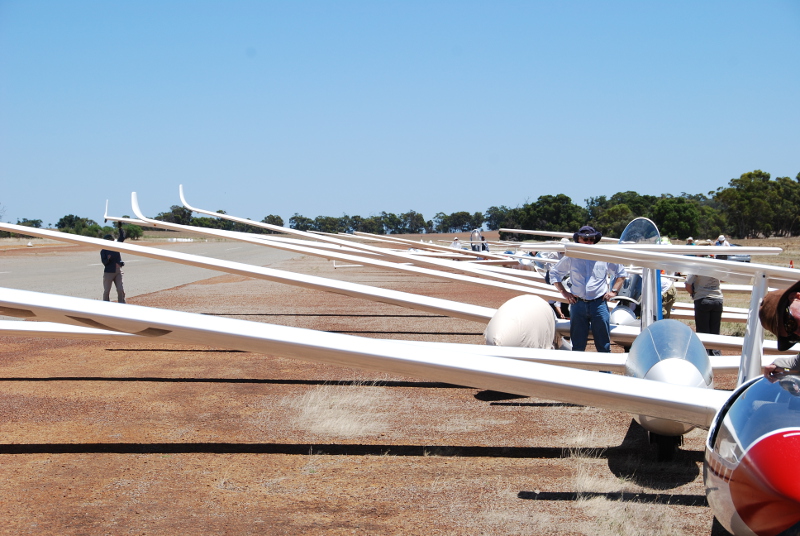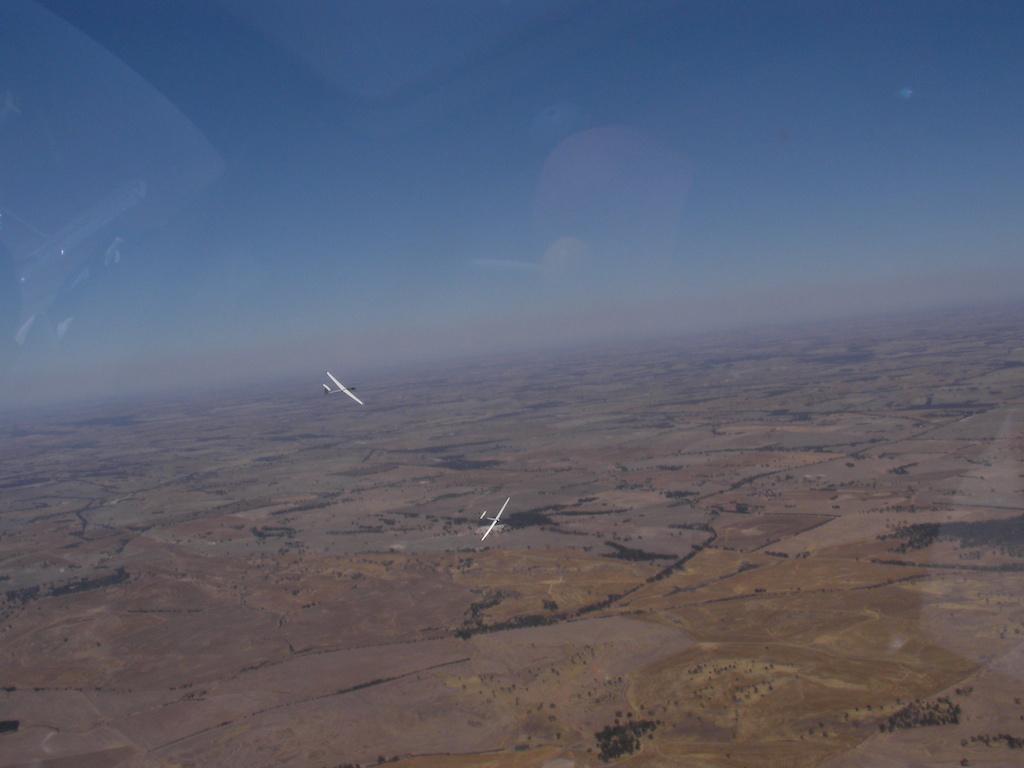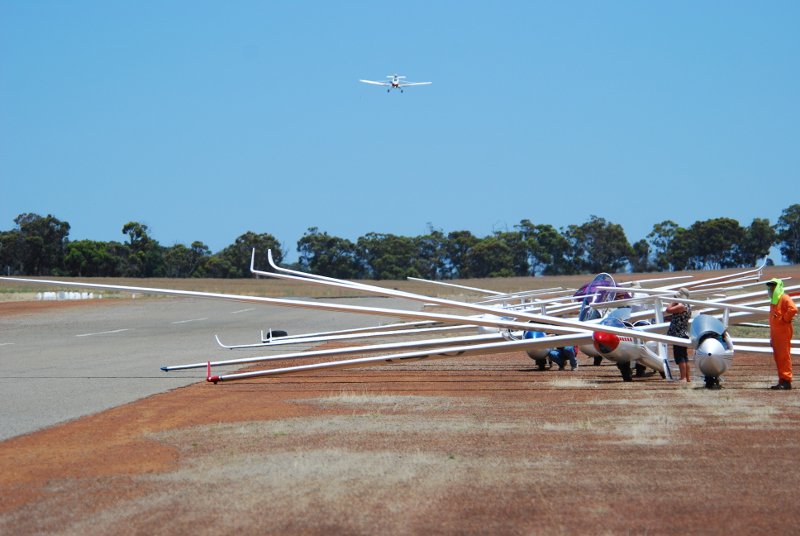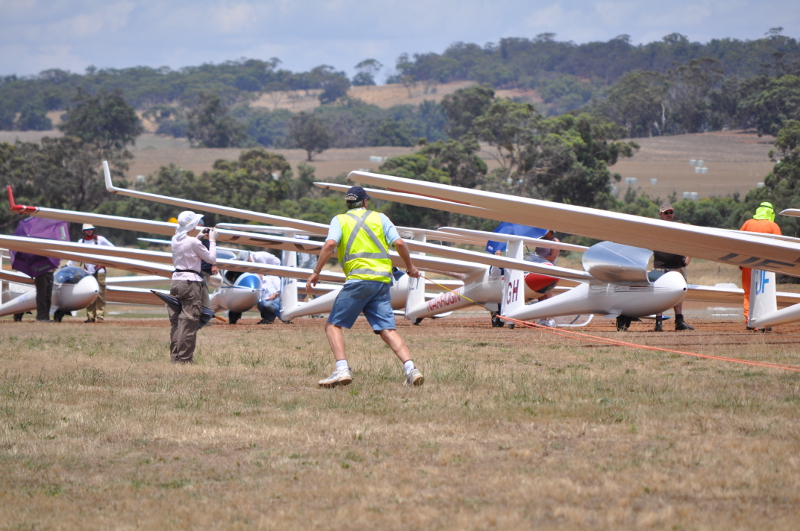Competitions
As well as a recreation, gliding is a very popular competitive sport, all around the world
Gliding competitions are races of various sorts around a fixed course of various types. A typical race, or task as it is called, is a triangle or quadrilateral course of about 300km, sometimes more sometimes less, around fixed points on the ground called turn points. Essentially, the competing gliders are launched, allowed time to gain height and explore the conditions a bit, and a start time is set (called “opening the start gate”). Gliders may start any time after the start gate is opened but not before, which makes the competition a judgement of weather and conditions as well as flying skill – Will the conditions get better or worse as the day progresses? Will I be able to go faster or slower if I start early or late?




